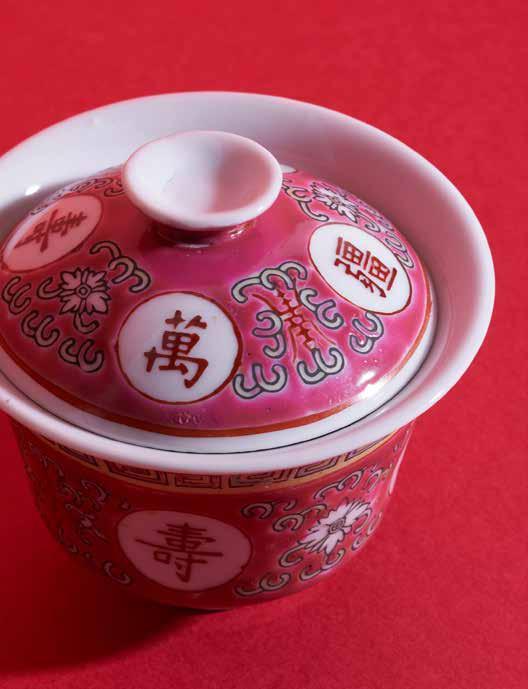
6 minute read
Renewing Your Brand
In the midst of the pandemic, all sectors of life have virtually been shifted online - from online education to online weddings, the world has undertaken a monumental shift in social engagement. As we spend increasingly more time online, we create a more nuanced network of our own data and presentation on online spheres, especially through social media.
In November 2020, GCP SUCCESS hosted a live interview with Timothy Fare-Matthews on the importance of self-branding in a predominantly online world. It has become apparent that social media is one of, if not the most, important tool for professional development - a tool that now more than ever can be used to maximise social and professional reach.
Advertisement
Timothy Fare-Matthews is the owner of First and Ten Productions, a production house in Dubai that has been a pillar of the city’s media industry, having worked with Pope Francis, Will Smith, Red Bull and many more. During the first national lockdown in the UAE in March 2020, Timothy and his colleague, Sebastian Bates, launched FTEN X Academy, an online networking community for Dubaibased business owners. From organising live interviews with business moguls, to offering services for multimedia course creation, Timothy has established himself within multiple networks by constructing a self-brand through his expertise.
Praising his early efforts to self-brand, Timothy noted that “With our branding (...) we were able to kickstart a product. It’s called the FTEN X Academy, and that enabled us to build a community and also sparked my own personal brand as well.”
Timothy emphasises the universality of the self-brand as something that everyone should focus on, as “there’s the brand of the business, and there’s also the brand of you.” Every social media post and account is part of your brand, from your WhatsApp picture to your LinkedIn cover photo – but how much are you paying attention to your social media? Despite the trials of attempting to develop a self-brand, Timothy maintains that “it’s all about being active”.
“It will develop, you won’t get it ‘right’. It will always be changing - we change as humans all the time; we learn things, we read things, the people we hang around - it’s all an influence. Be open to change, and know that you won’t get it right. Just start.”
In a time of continuous online events, lectures, meetings and engagements, it has become our second nature to immerse ourselves into social media and the virtual realm. What we choose to do with our time online can alter our future possibilities by taking the effort to renew our own self-presentation on social media.

There & Back Again
By Duen Yung Leung
The Renewing Perceptions of Chinese Porcelain in England from the Sixteenth to the Eighteenth Century
Since the Fifteenth century there has been an inbuilt, irresistible assumption that the trade of Chinese porcelain marked the start of global connection and the consumption of foreign goods. For pieces as exquisite as these, it is almost justifiable to assume that there was an immediate Western appropriation of porcelain manufacture and Chinese designs. This assumption premises that these ravishing vessels and table wares were gladly accepted and used the way they were supposed to be even when imported to England. However in reality, Chinese porcelain and its designs in England were conceived of in different ways, undergoing renewed interpretations through the centuries. When china was first adopted in Britain, Chinese motifs such as turbulent waves, phoenixes and dragons were strange to the English culture. It took local production more than three hundred years to start including these motifs into their own, locally made porcelain designs. These false assumptions are clearly based on a problematic way of thinking that prevents people from looking into the differences between localized patterns of porcelain creation and consumption and those received from the country of origin. Furthermore, there has been the temptation of looking at same location and with the same type of objects, means of consumption could vary in different periods.
For instance, in England the introduction of Chinese porcelain dates back to the mid-Sixteenth Century: these new objects and their
material caused confusion as people were introduced to a new style and form from across the world. In light of this confusion, when china arrived in England at this time, it was incorporated into a goblet-shaped cup known as Tazza, making it more familiar to the local ceramic forms, hence more approachable.
an object as an independent work of art while leaving out the complex life that china had once it reached England. This is an interpretation that was emphasised by the early field of connoisseurship (a field that valuates art on where, when, and who created it) that has led to an overrepresentation of china as solely a trade pattern. Indeed, even in the


It is yet to be uncovered whether the Britons lacked the interest to adopt the exact manufacturing techniques or failed to do so, but for more than 300 years attempts were solely made on resembling and replacing with nonporcelain alternatives. The earliest re-creation of Chinese porcelain was not seen until William Cookworthy was granted a patent for porcelain production sometime before 1768. It is clear that the true imitation of Chinese porcelain and thereafter, its motifs, did not begin until long after its first introduction to English society.
Once considered luxury goods, Chinese porcelain circulated in global trade. As time has passed, it has continued to serve as tableware for business tycoons and political oligarchs. Eventually, they became, and still are, exhibits in museums and part of interior design schemes. In exploring china’s origin in conspicuous consumption and beyond,
a broader and more diverse story can be told where a local self-identity is evident. In all, the British china trade was more locally fuelled and complex than a simple imitation scheme; both conceptions and perceptions of china evolved and was renewed in cycles over time.
Owing to its growing familiarity, the porcelain market enjoyed prosperity in the Seventeenth Century. The elites started collecting and displaying these objects in their homes as a symbol of wealth and social status. Two of the most well-known surviving collections belonged to John Tradescant and Walter Cope of Britain. Later in the same century, chinaware was freed from its mere ostentatious furnishing function, and was renewed in its original purpose – for drinking and dining. While many people of prominence still continued to display them as ‘curiosities’, Chinese porcelain, according to Hannah Wooley’s cookbook The Queen-Like Closet, acquired a tableware function dedicated to serving dishes such as sweetmeats. Hence, it may be inferred that instead of the cliché ‘first use, then
collect’, imported china in England had been first collected for display until its active use was renewed. Later, it was once again aesthetically collected - although some remained in use.
Though the Englishmen showed genuine enthusiasm in porcelain, the endeavour to imitate Chinese techniques, which has significant influences on motifs, began only a few decades after china first arrived.










